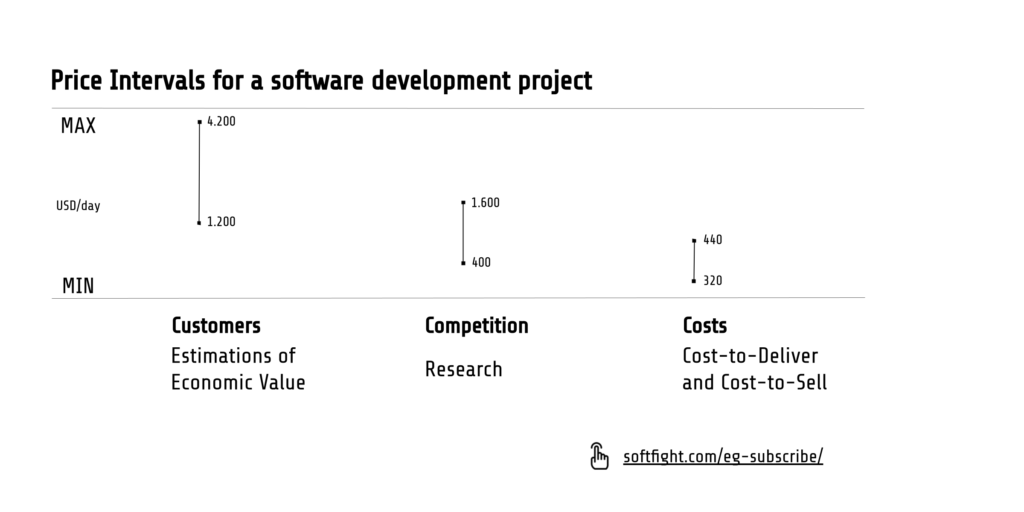Every time we make a decision, we are influenced by many factors. Personal history, psychological traits, short term objectives, long term goals, accumulated knowledge, relevant expertise, time constraints, blind spots and the list can go on.
When it comes to business contexts, the data we take into consideration, or not, also has a significant impact on the decisions we make.
Setting the price for a new project
Picture this:
- You need to set the price for a new software development project
- You have received all the information you asked from your potential customer, after having multiple discussions with their CTO and finance manager
- Your colleagues have analyzed the technical requirements and have given you detailed estimates of effort
- You have worked on your project proposal document and are now in front of the pricing section
Would it help you if you had something like this as input?

If I were in your position, having to set a price for a new project, I would always try to build this picture of “Price Intervals”.
Here is how I would compute these values.
I’m using the “daily reference rate” as the common denominator for the analysis part of this exercise. This doesn’t mean that the pricing metric presented to the customer has to be a daily rate.
Customers Price Interval
How much are similar customers willing to pay to solve the problem that you are promising to solve?
Steps to go through:
- Define a customer segment. Here is an example: Scaleups in the US, using a Serverless Architecture.
- Problem they are trying to solve: expand their engineering team, to be able to add new modules and features to their platform, to grow by quickly capturing market share
- Estimate Economic Value for them from this project. In this case, Economic Value = How much the increased market share is worth to them – The cost of expanding their engineering team to develop the extra features.
- How much are they willing to pay? This will depend on multiple variables:
- Their geographical location – the salaries and overhead costs they would have to pay to expand their in-house team locally? Do they also have remote team members? How does this impact their cost structure?
- Their company’s economics – are they profitable? Do they have external funding? Can they afford to pay for higher quality?
- The importance they place on quality engineering. How important is it for them to work with a skilled and experienced vendor?
- How do they prioritize the project management triangle: cost – scope – time?
Competition Price Interval
What matters here is direct competition.
There are tens of thousands of companies and freelancers in this world that could potentially compete with you on this project. But you have to ignore all of them. You only have to think about the competition for this particular project.
Questions to answer:
- Which other vendors are going after the same type of customers?
- Who is offering a quality similar to the one you can deliver?
- What prices are they charging?
Cost-based Price Interval
For the cost-to-deliver, you can make simulations for 2 different team sizes for the project.
If the estimates from your colleagues is for a 6 months project with 3 developers, you can calculate your costs for
- 6 months, current team members, current salaries: 3 developers + other roles (QA, PM, etc.), depending on your contracting model
- 12 months, larger team (5 developers + other roles), factoring in the expected salaries increases and extra costs if 2 of the team members have to be replaced (lost productivity, recruitment cost, higher salaries needed to attract new team members)
This will give you a realistic range of costs for different scenarios.
WHAT THIS MEANS FOR YOU
The outcome of any price setting action depends to a large degree on the data used as input.
You have control over what data you take into consideration when you set your prices.

